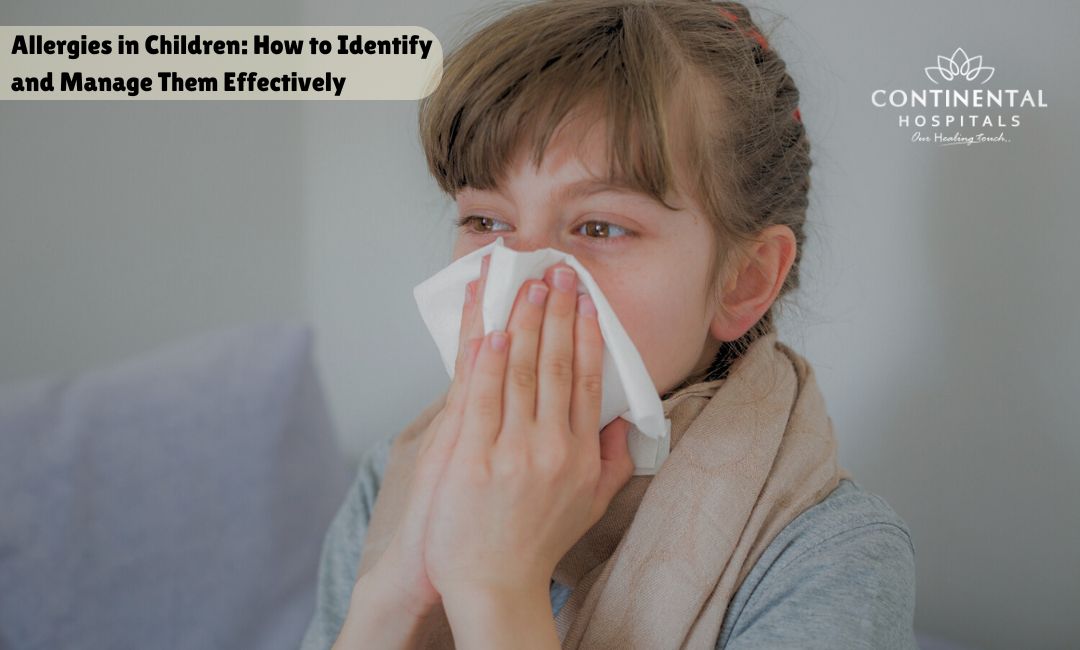Managing allergies in children can indeed pose significant challenges for parents, as allergic reactions can range from mild discomfort to severe, life-threatening situations. However, armed with the right knowledge and strategies, parents can effectively navigate this terrain and ensure their children live comfortably despite their allergies.
The first step in managing allergies in children is understanding the specific allergens triggering their reactions. This often involves careful observation of symptoms, consultation with healthcare professionals for proper diagnosis, and sometimes undergoing allergy testing. Once the allergens are identified, parents can take proactive measures to minimize their child's exposure. This may include modifying their diet to avoid common food allergens, implementing environmental controls to reduce exposure to dust mites, pollen, or pet dander, and ensuring they have access to necessary medications like antihistamines or epinephrine auto-injectors in case of severe reactions.
Common Allergies in Children:
Food Allergies:
Common allergens: peanuts, tree nuts, milk, eggs, soy, wheat, fish, and shellfish.
Symptoms: hives, swelling, vomiting, diarrhea, and difficulty breathing.
Diagnosis: Allergy testing, elimination diets, and keeping a food diary.
Management: Strict avoidance of allergens, carrying epinephrine auto-injectors, and educating caregivers and schools.
Environmental Allergies:
Common allergens: pollen, dust mites, pet dander, mold.
Symptoms: sneezing, runny nose, itchy eyes, coughing, wheezing.
Diagnosis: Allergy testing, symptom tracking, and environmental controls.
Management: Allergen avoidance, using air purifiers, keeping windows closed during high pollen seasons, and regular cleaning.
Skin Allergies:
Common allergens: soaps, detergents, fabrics, cosmetics, plants.
Symptoms: rash, itching, redness, swelling, blistering.
Diagnosis: Patch testing, elimination diets, and observation.
Management: Using hypoallergenic products, avoiding known triggers, keeping skin moisturized, and seeking medical attention for severe reactions.
Identifying Allergies in Children:
Observation:
- Pay attention to symptoms such as sneezing, itching, coughing, and gastrointestinal issues after exposure to certain foods, environments, or substances.
- Keep a detailed record of symptoms, triggers, and timing to help healthcare professionals with diagnosis.
Allergy Testing:
- Skin prick tests and blood tests can identify specific allergens triggering reactions.
- Consult an allergist for accurate testing and interpretation of results.
Elimination Diets:
- Temporarily remove suspected allergens from the child's diet or environment to observe changes in symptoms.
- Reintroduce eliminated items one at a time while monitoring for reactions.
Lifestyle Modifications
- Encourage a diet rich in lean proteins, whole grains, fruits, and vegetables.
- Discourage the consumption of processed and sugary foods.
- Prioritize regular physical activity, aiming for at least an hour of exercise daily.
- Promote outdoor play to enhance exposure to sunlight and fresh air.
- Establish a consistent bedtime routine to ensure sufficient sleep.
- Limit screen time before bedtime to improve sleep quality.
- Teach relaxation techniques to help children unwind and reduce stress.
- Foster open communication about allergies and encourage self-advocacy.
- Create a supportive home environment that promotes healthy habits.
- Educate family members and caregivers about allergy management and prevention.
Managing Allergies Effectively:
Educate:
- Teach children about their allergies, symptoms, and how to avoid triggers.
- Educate caregivers, teachers, and family members about emergency procedures and the importance of allergen avoidance.
Medications:
- Antihistamines can alleviate mild allergy symptoms.
- Corticosteroids may be prescribed for severe reactions or chronic conditions.
- Carry emergency medication like epinephrine auto-injectors for anaphylactic reactions.
Allergen Avoidance:
- Create an allergen-free environment at home by removing triggers like pet dander, dust mites, and mold.
- Pack safe snacks for outings and inform restaurants about food allergies when dining out.
Prevention of Allergies in Children:
Breast feeding:
- Breastfeeding can reduce the risk of developing allergies in infants.
- Exclusive breastfeeding for the first six months is recommended.
Introduction of Solid Foods:
- Introduce common allergenic foods like peanuts, eggs, and fish early in a child's diet (around 6 months) to potentially reduce allergy risk.
Clean Environment:
- Regularly clean and vacuum to reduce exposure to dust mites and pet dander.
- Use allergen-proof covers on pillows and mattresses.
Conclusion:
Identifying and managing allergies in children requires a collaborative effort between parents, healthcare professionals, and educators. By understanding common allergens, recognizing symptoms, and implementing effective management and prevention strategies, parents can help their children lead healthy and fulfilling lives despite allergies. Early intervention and proper education are key to ensuring the well-being of allergic children.
Related Blogs :
.webp)














